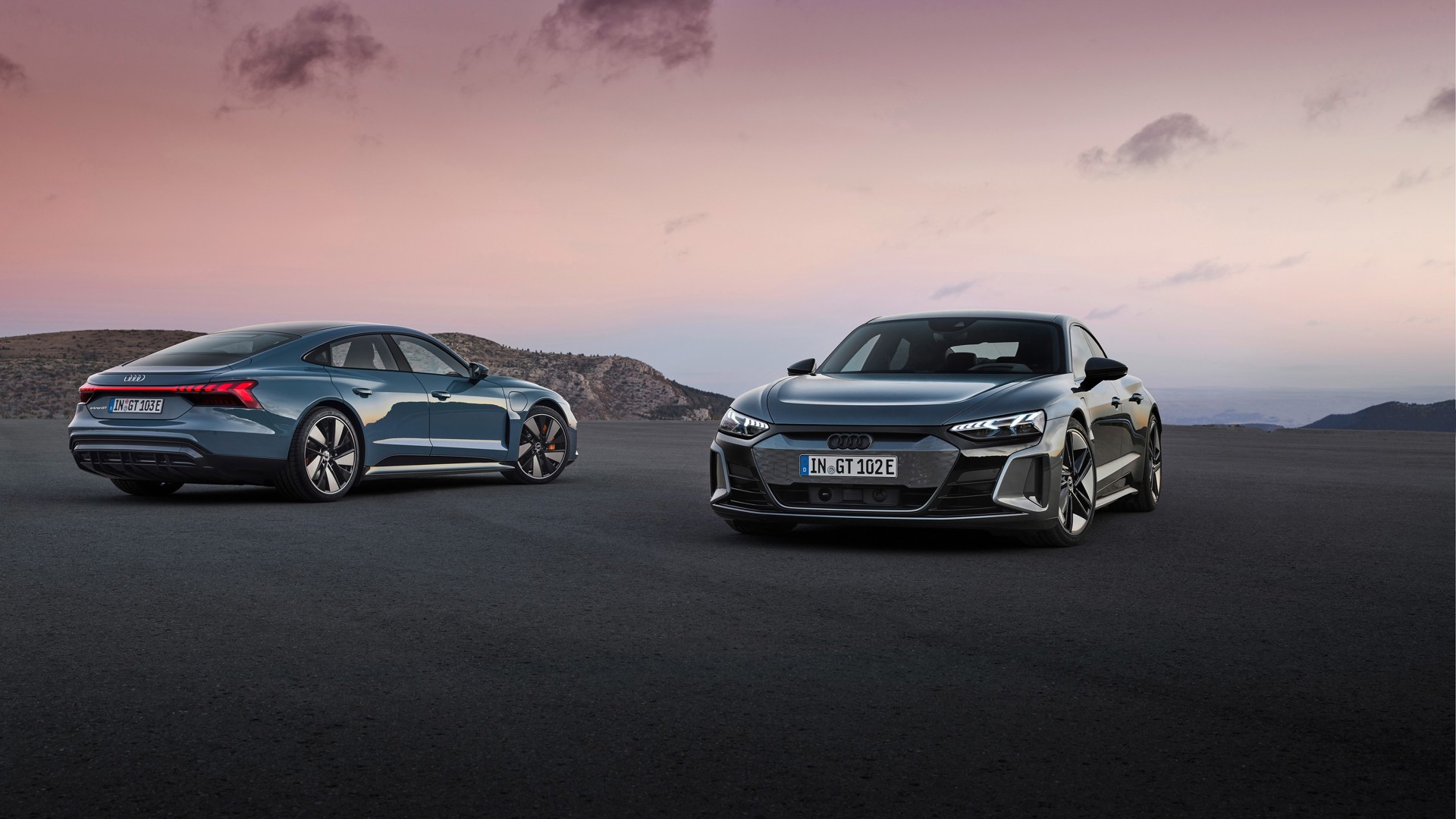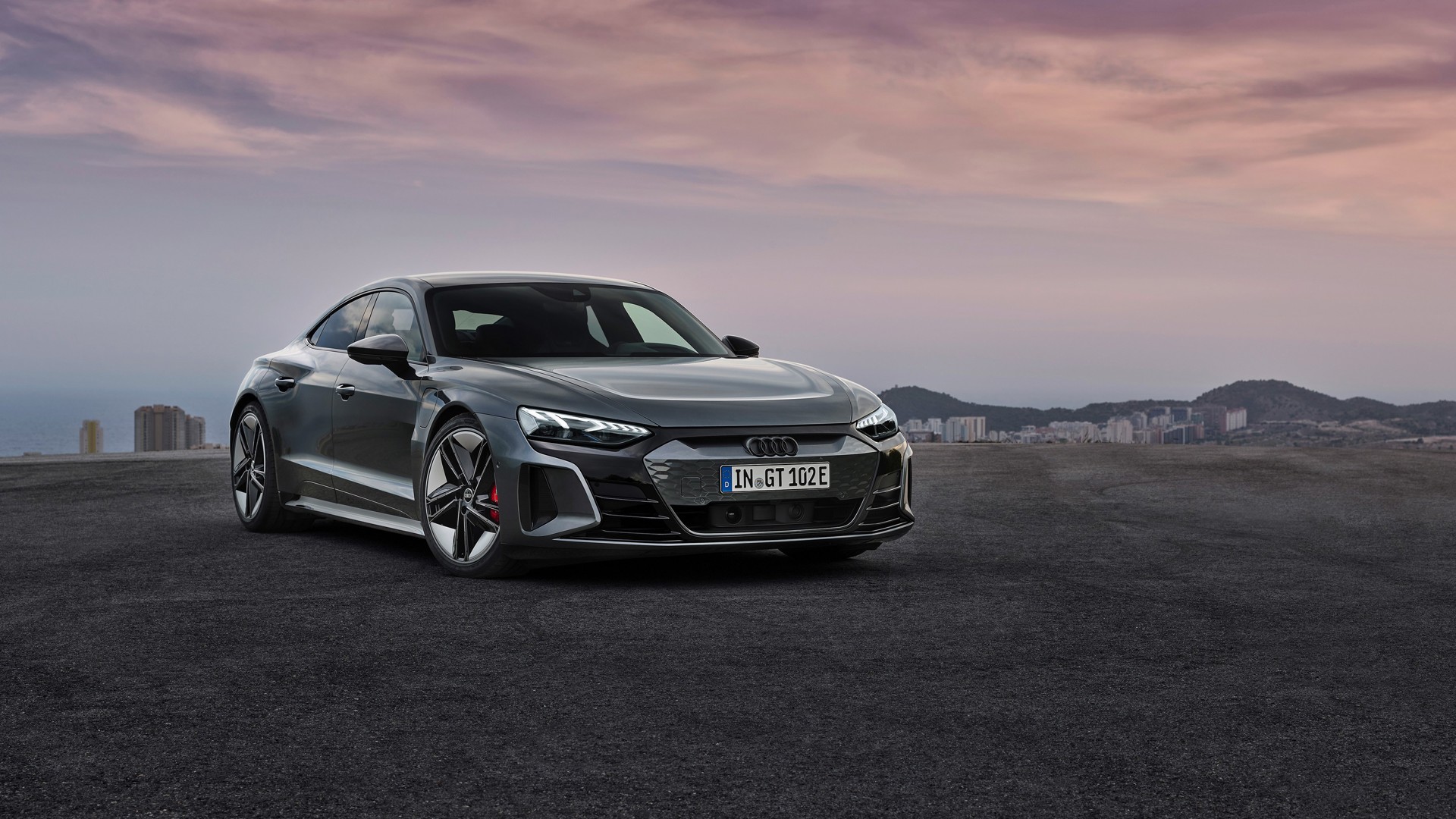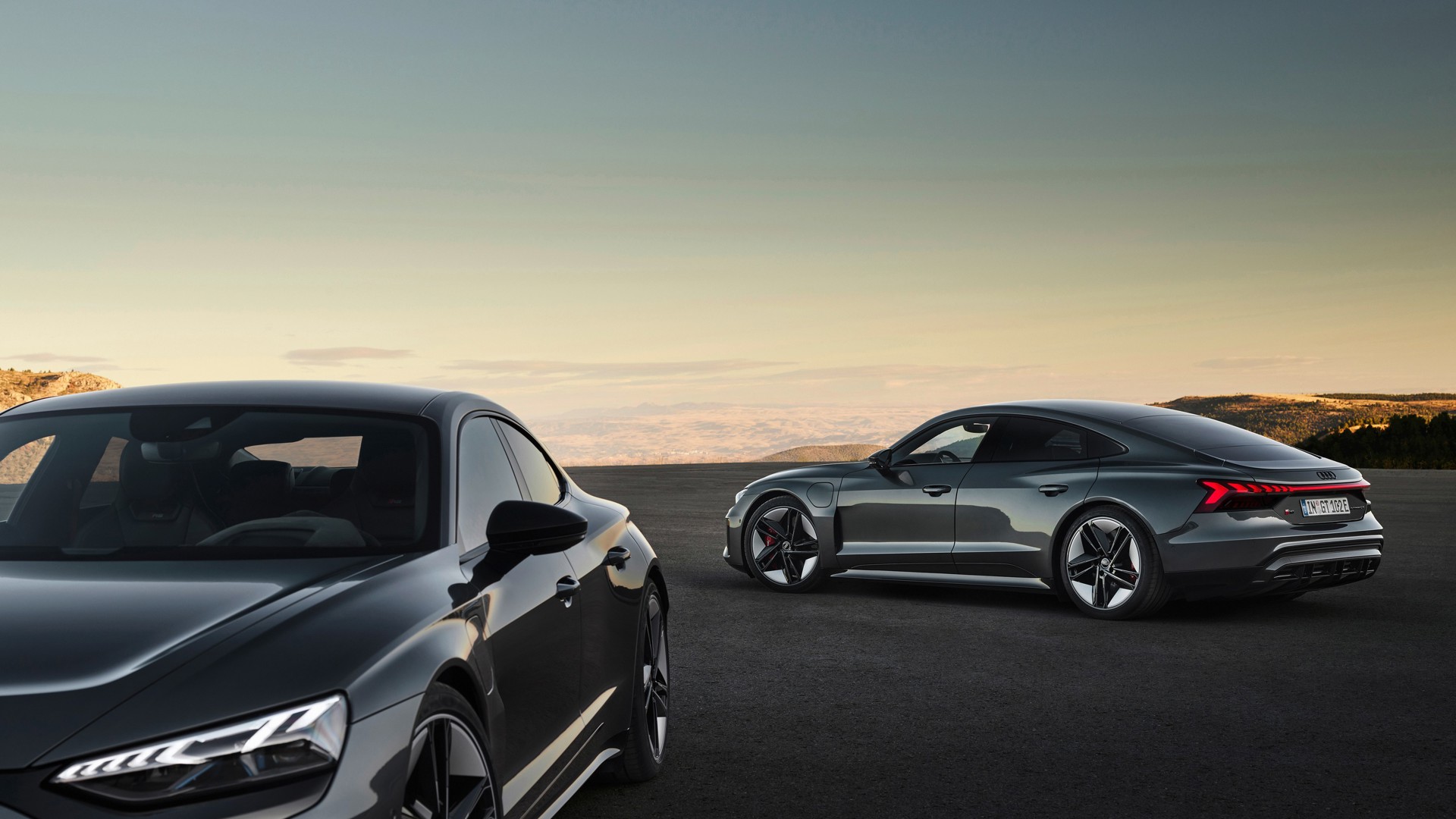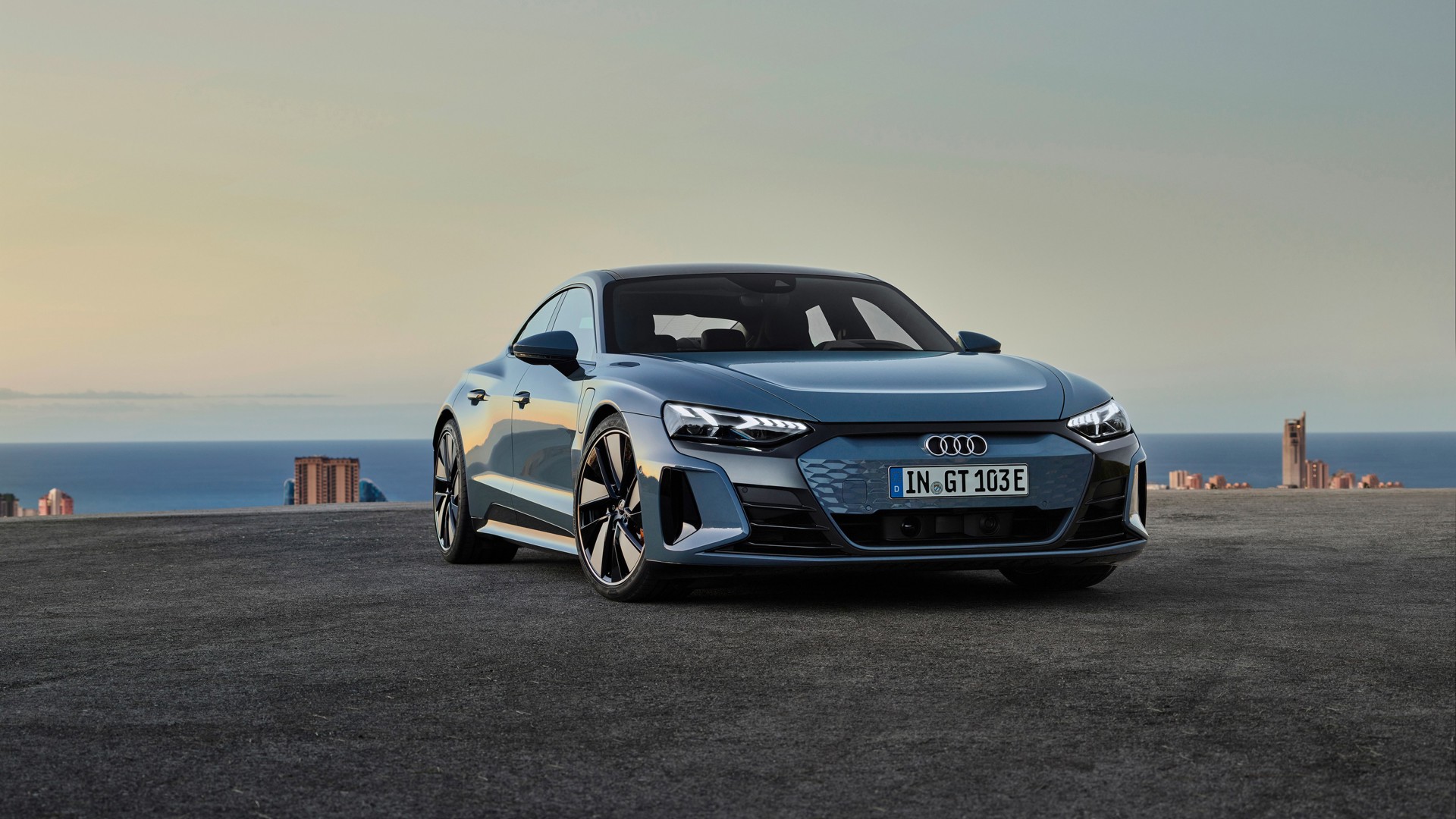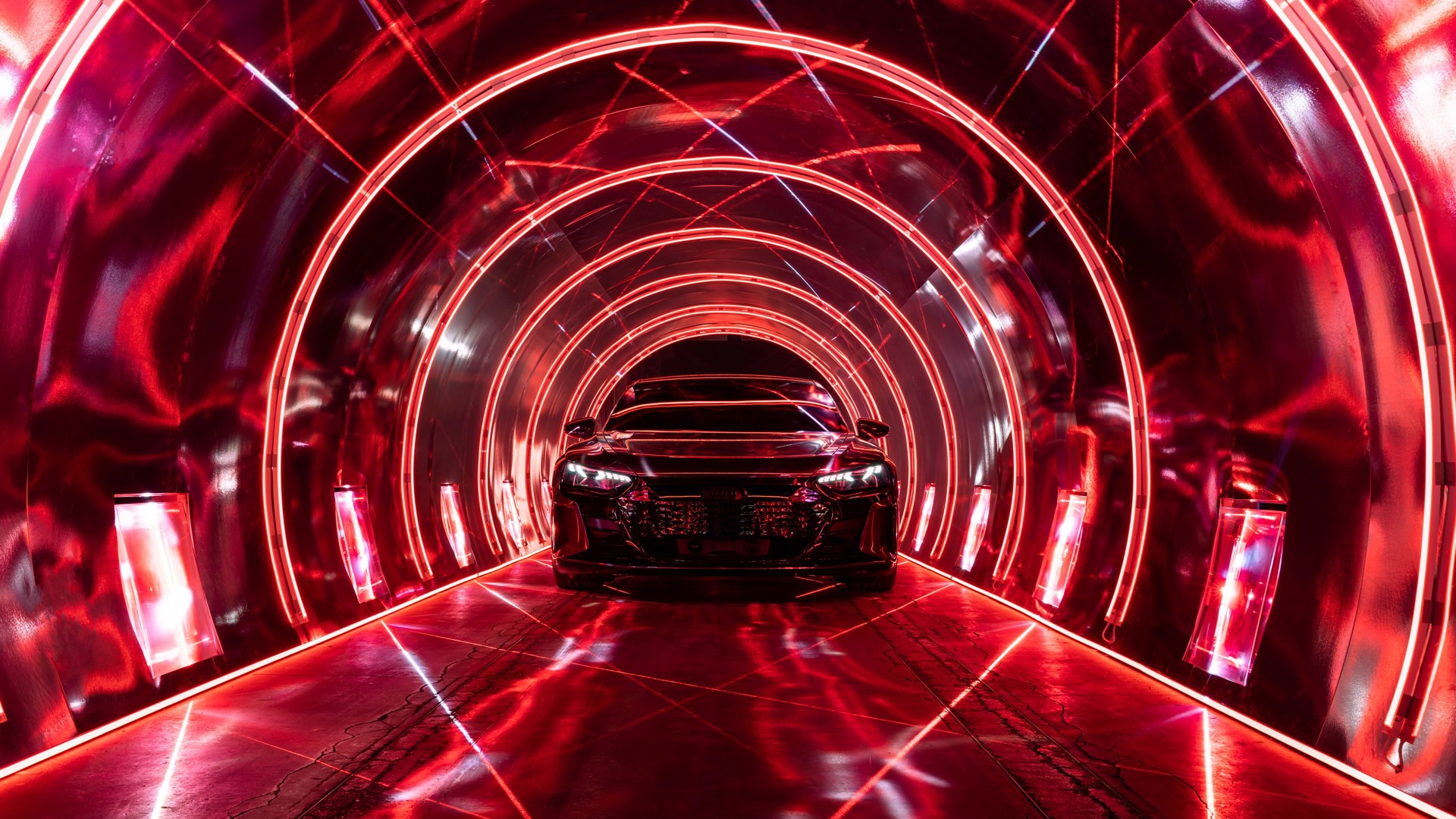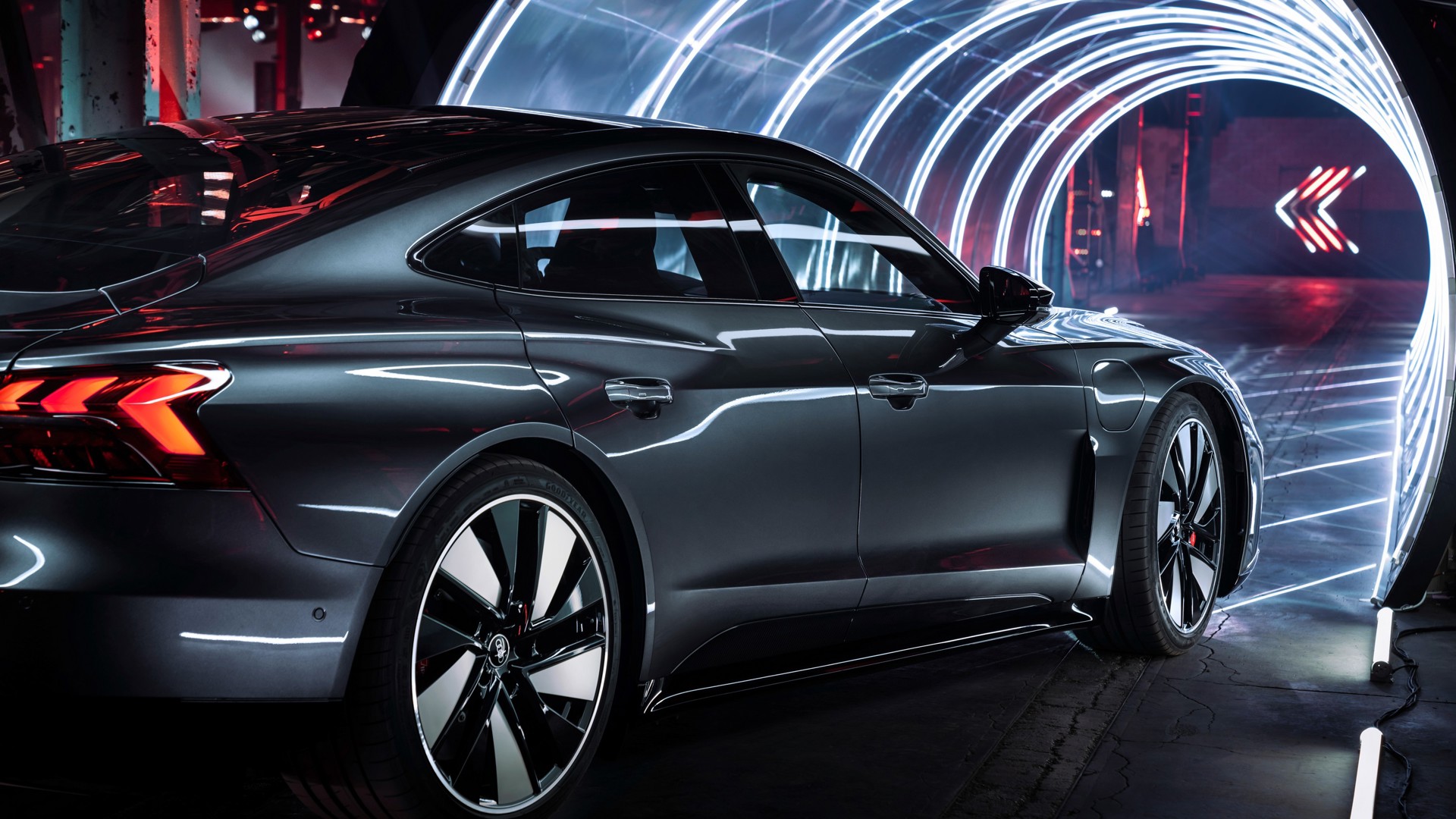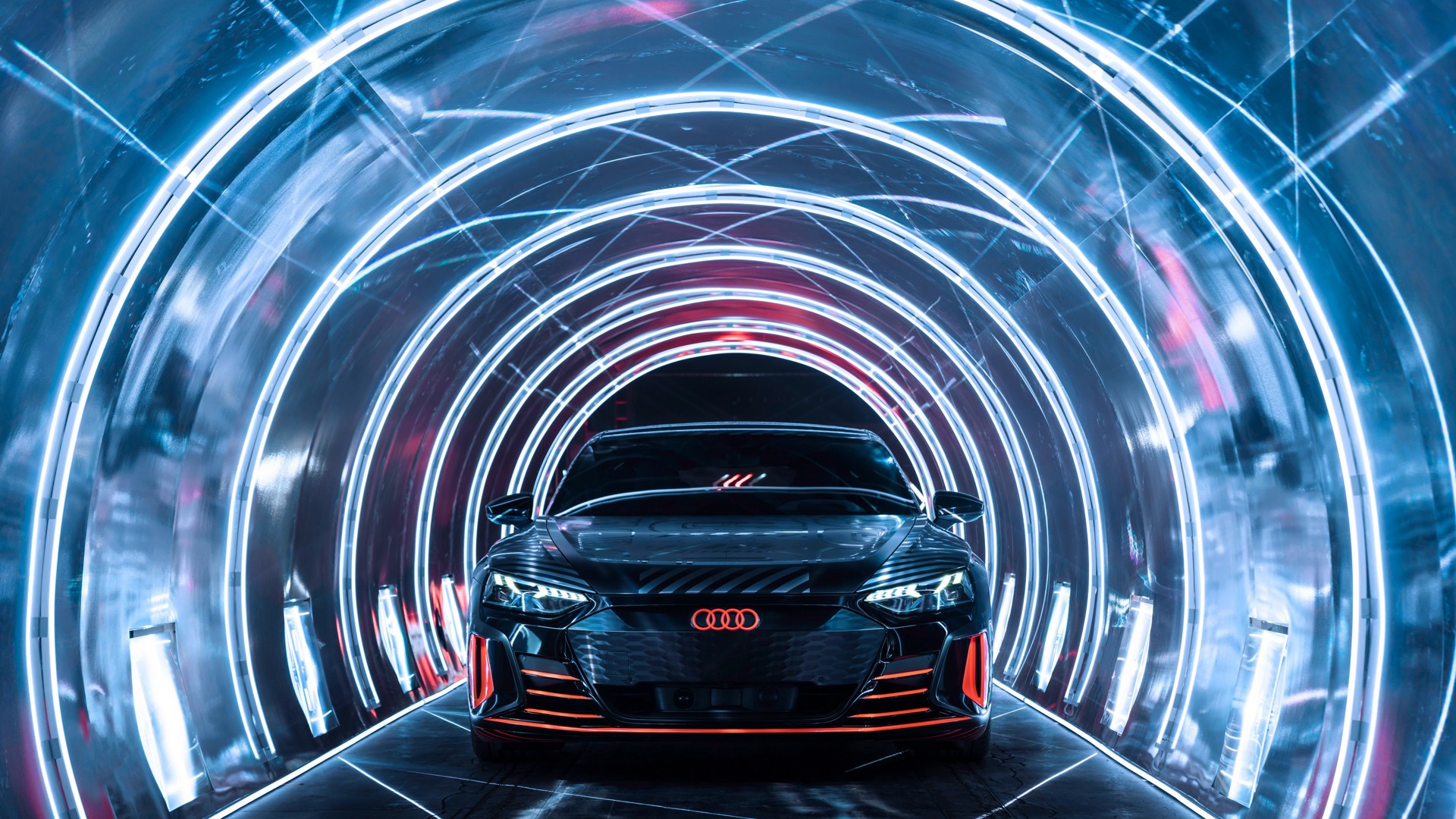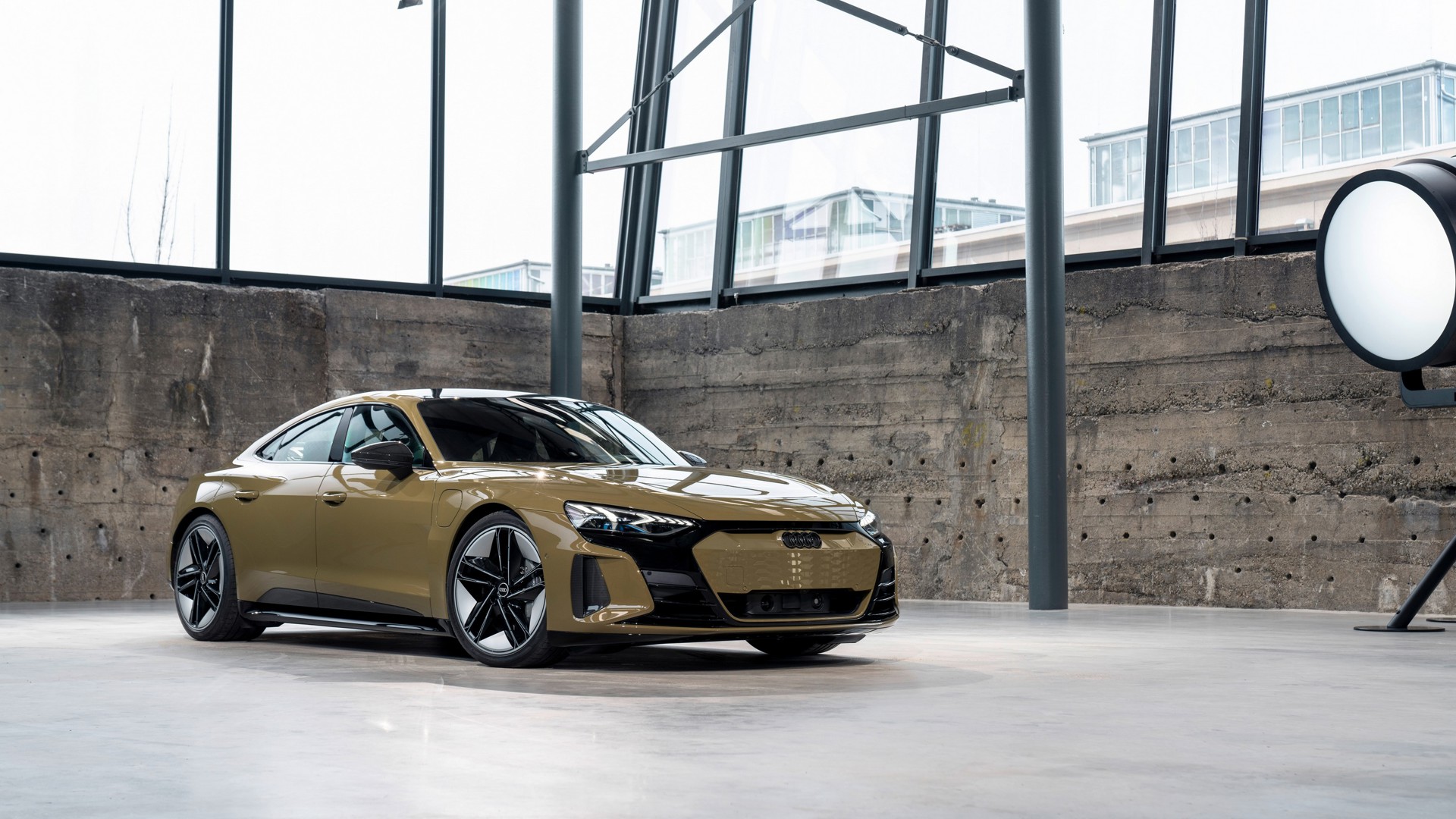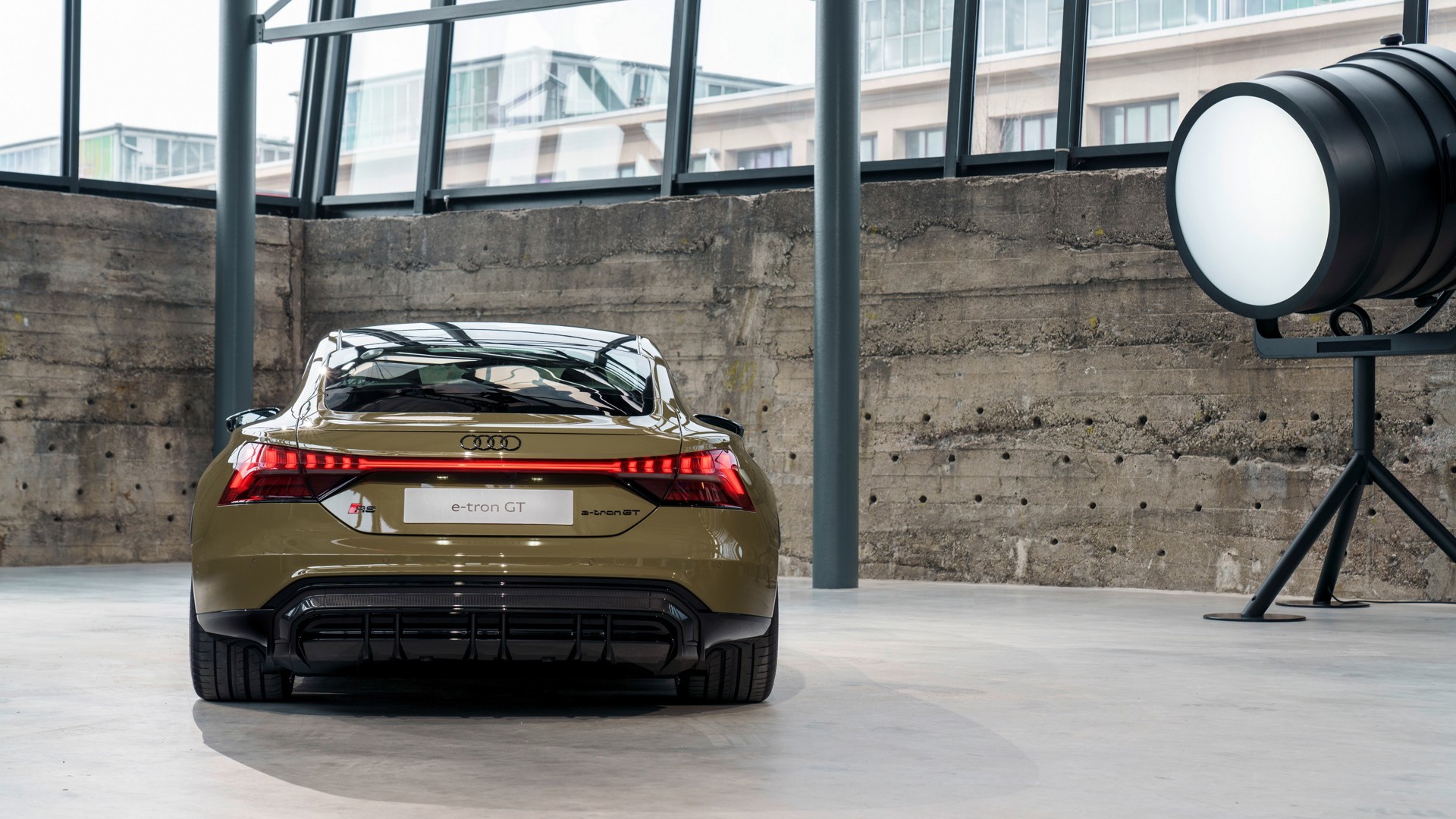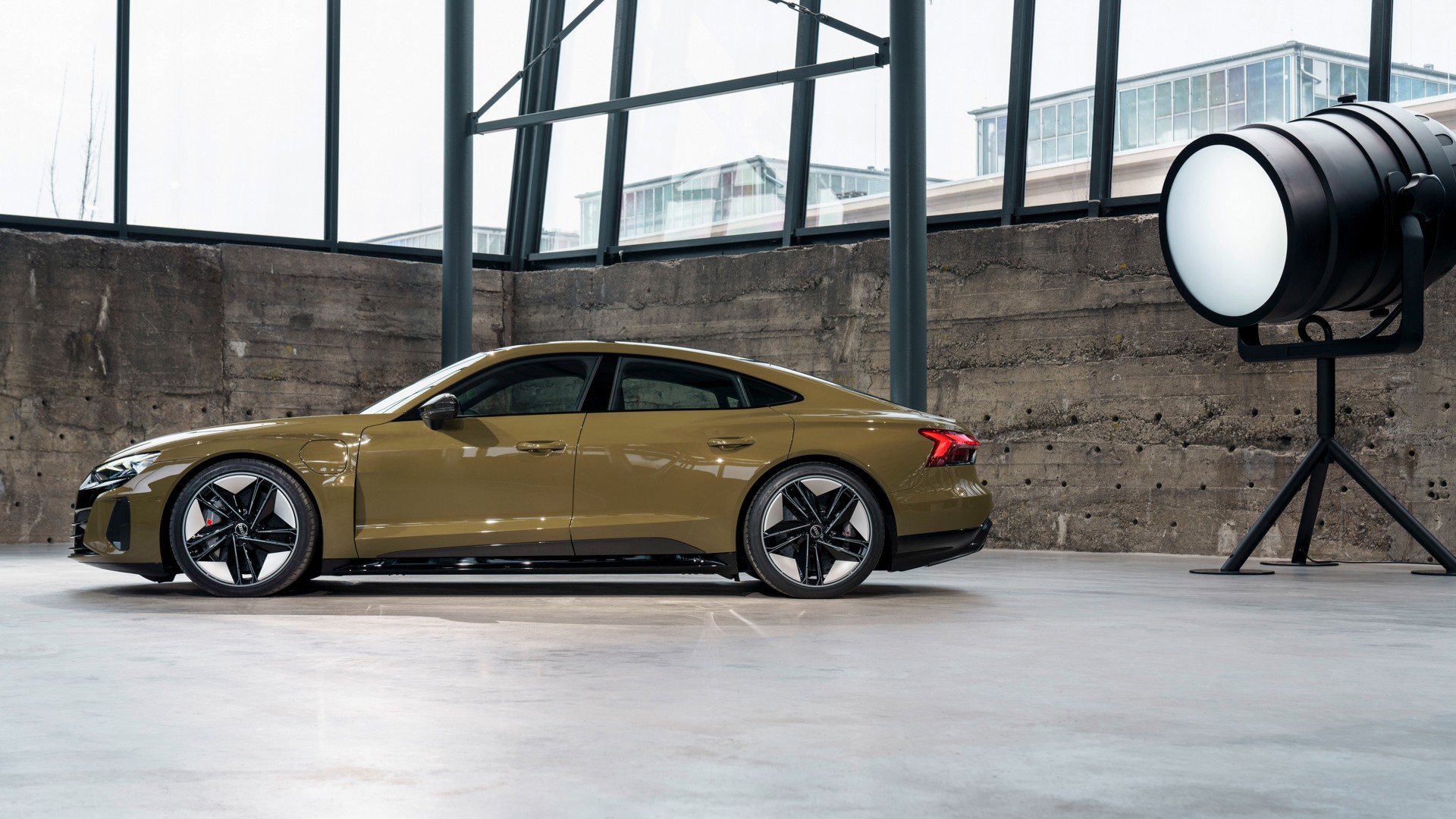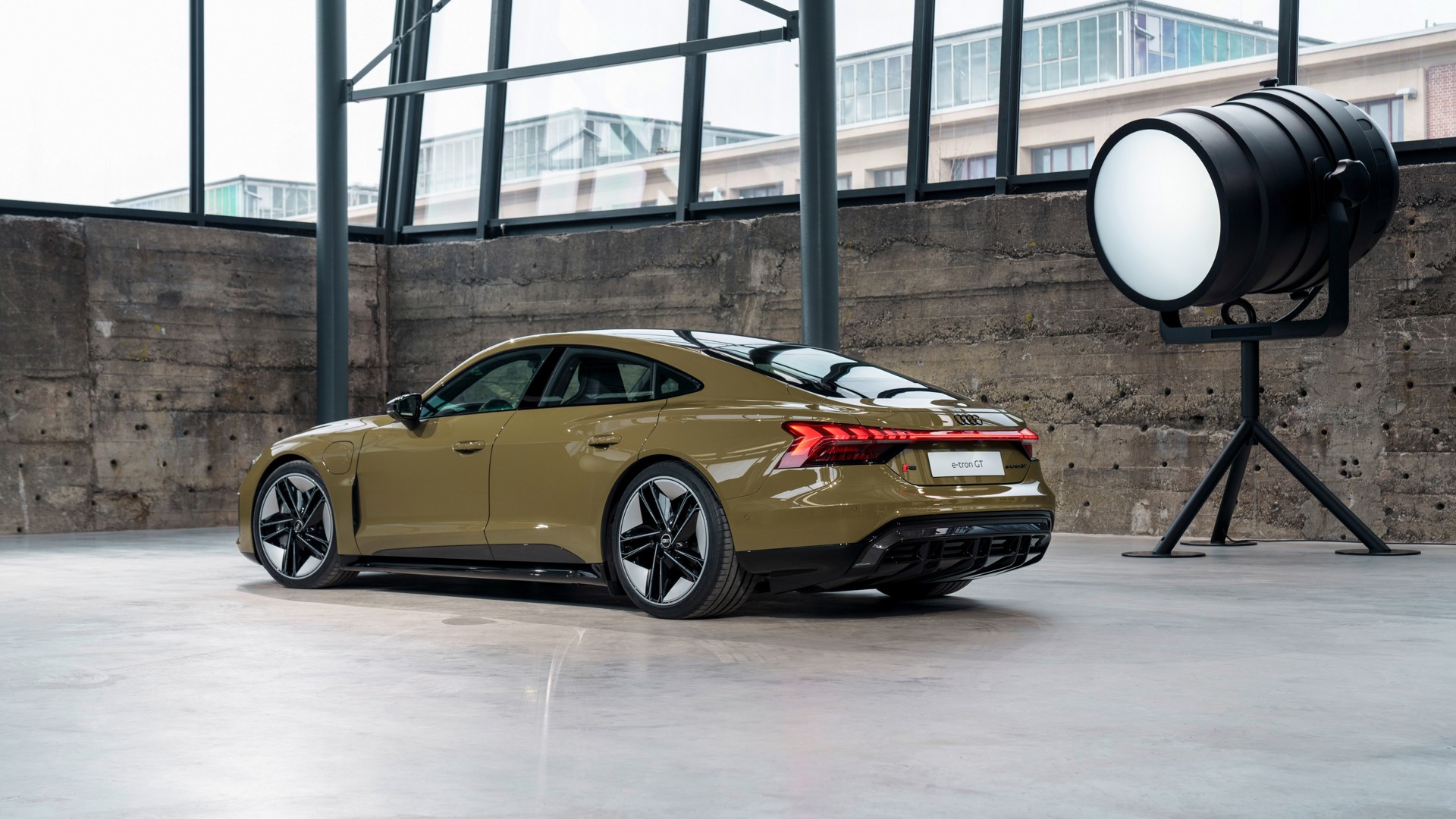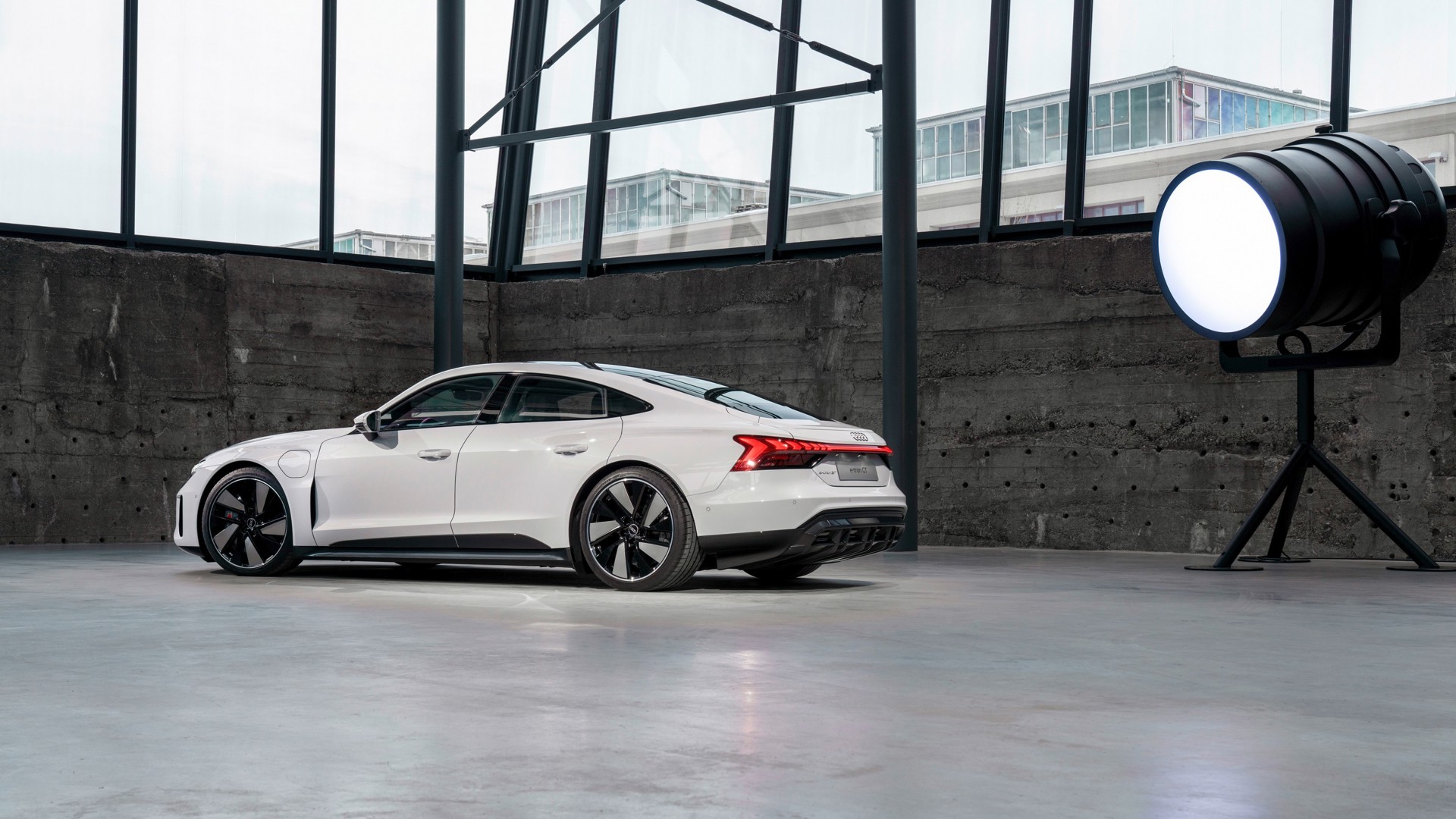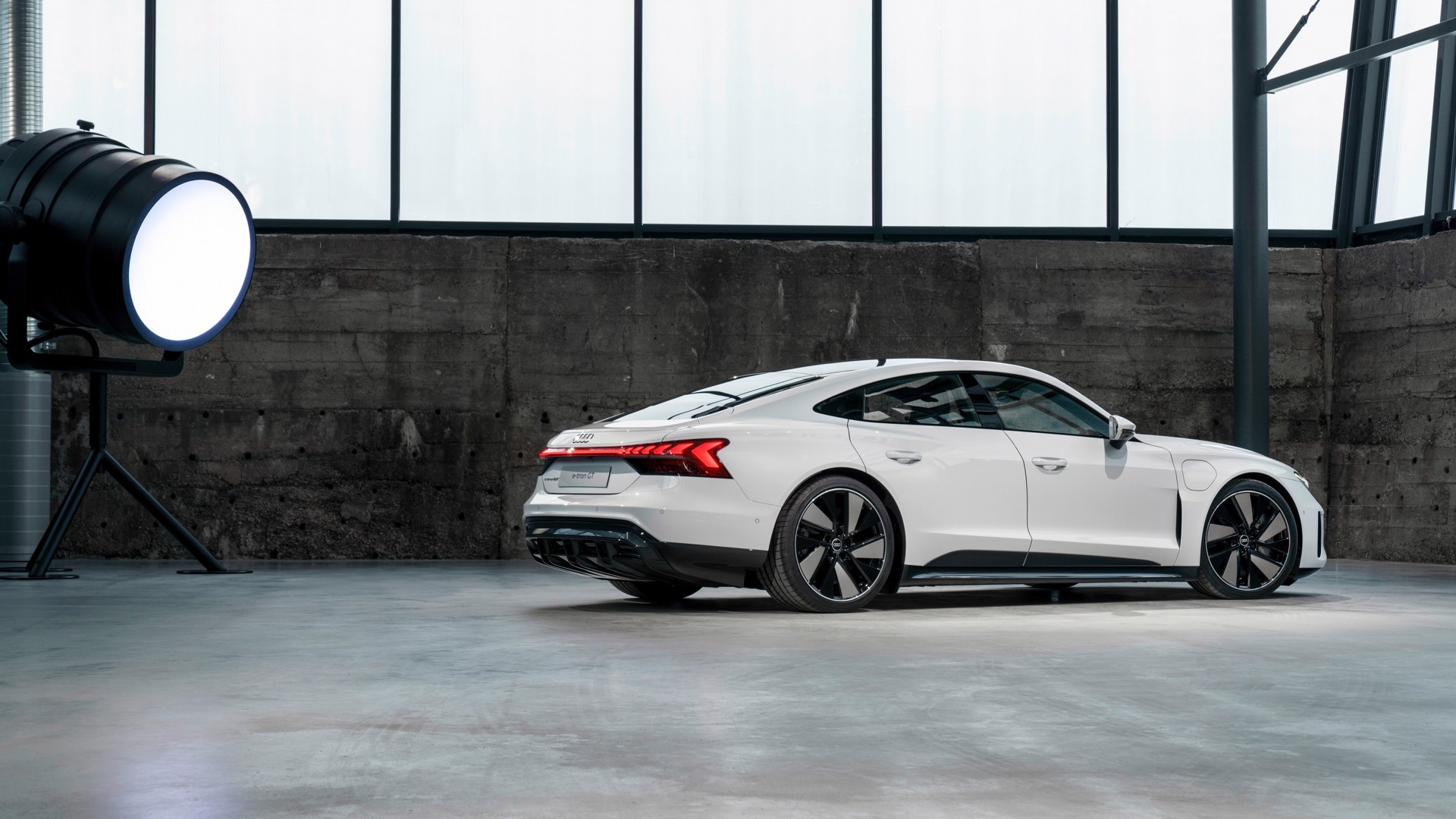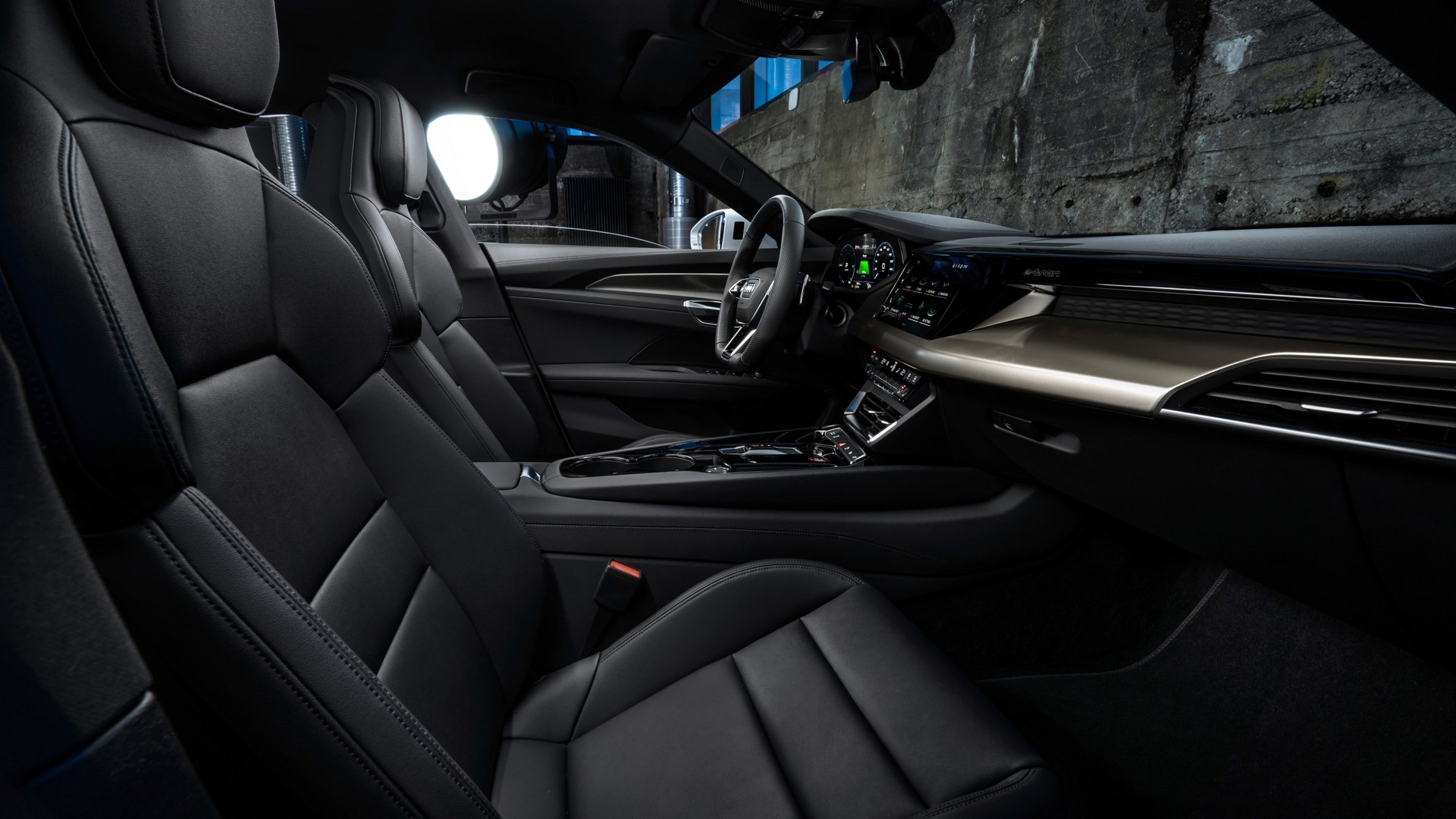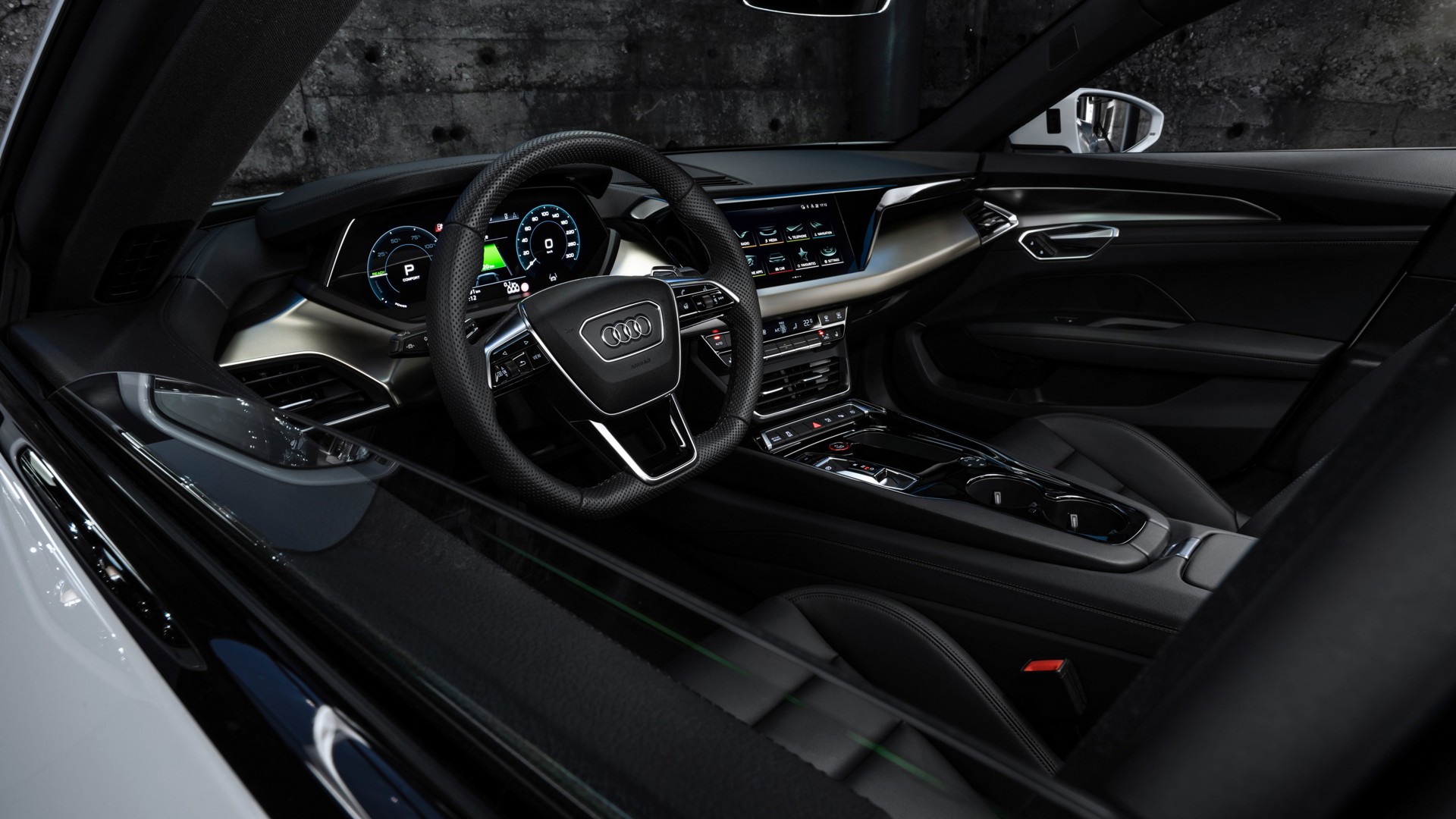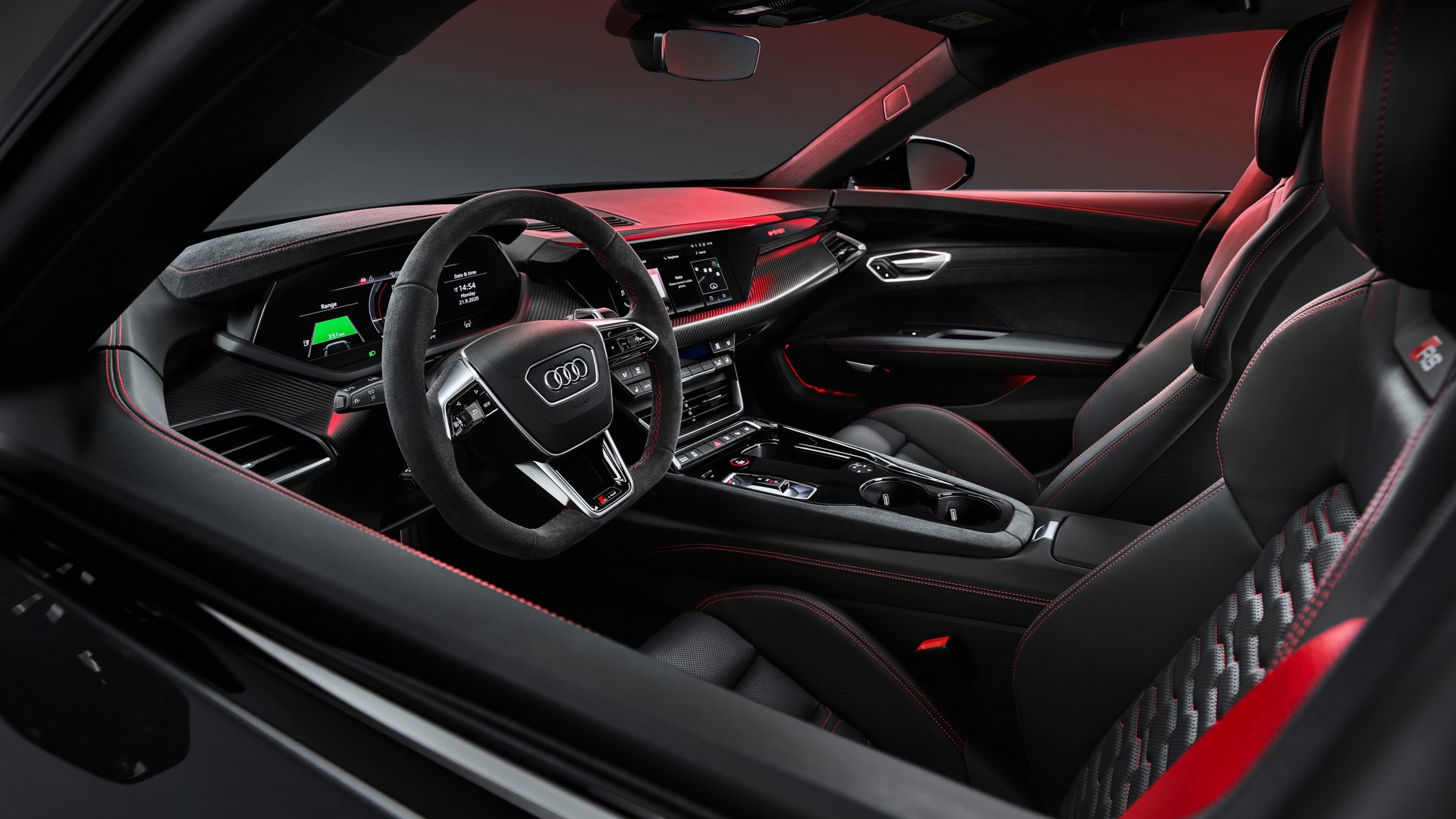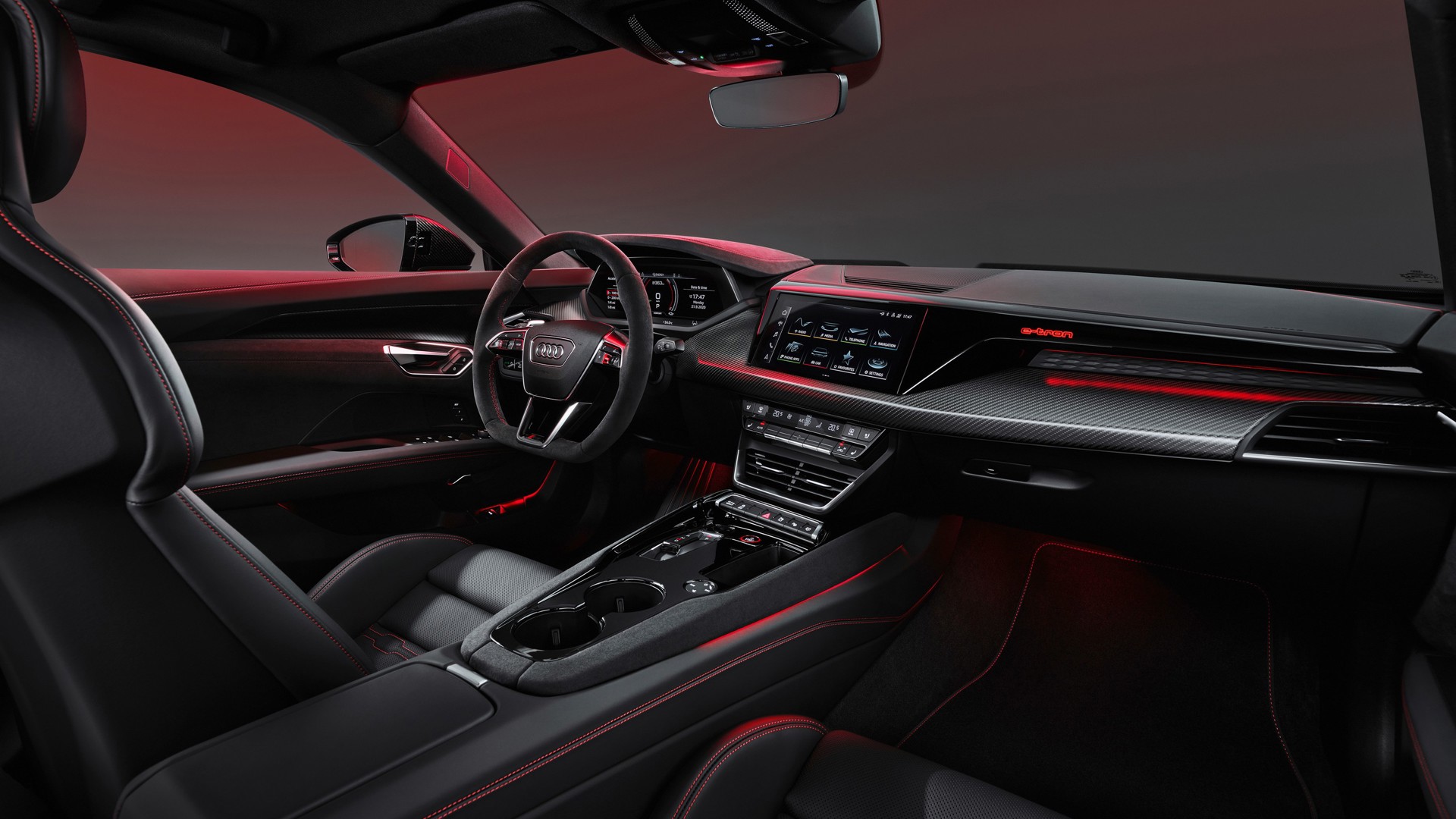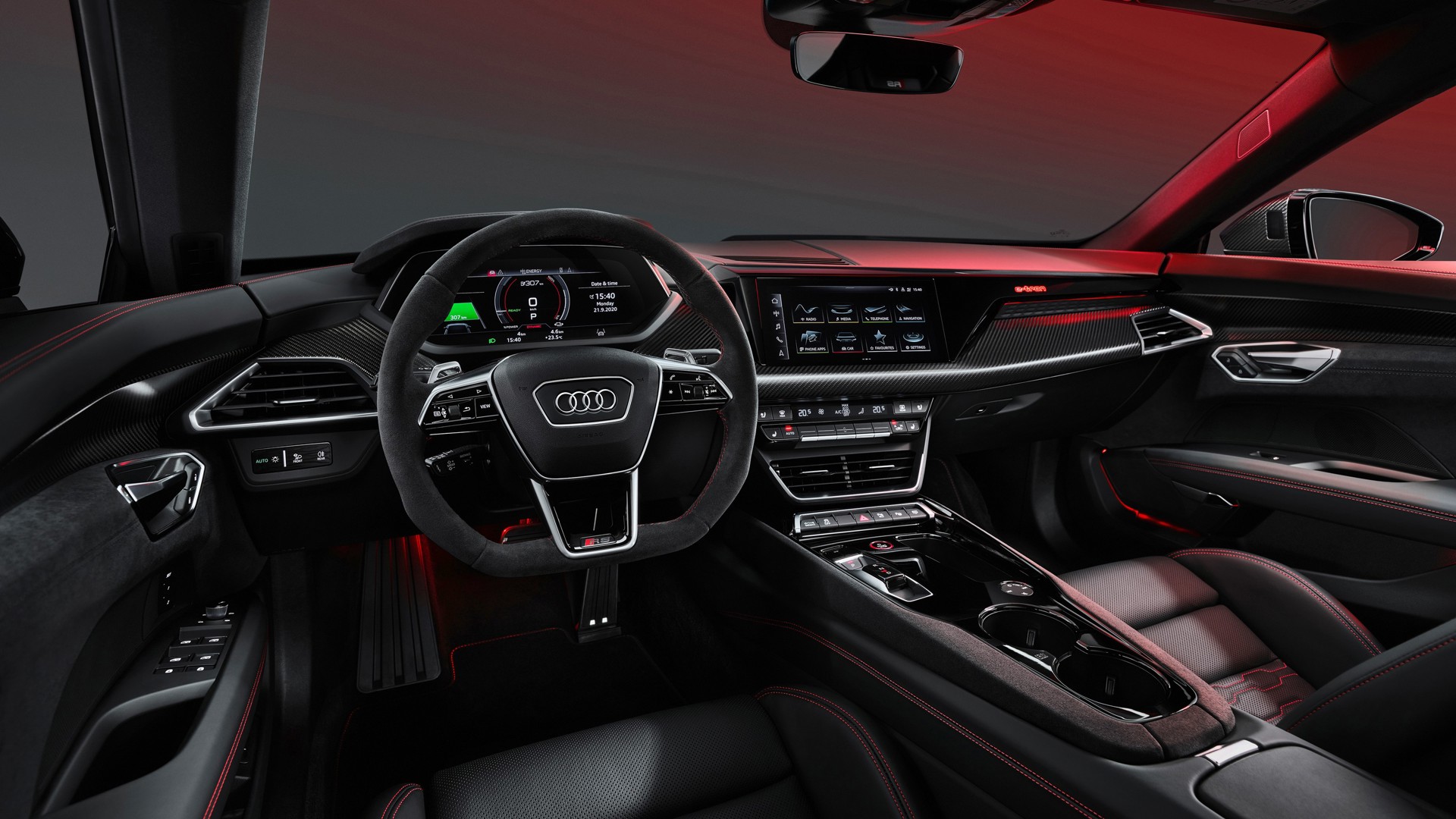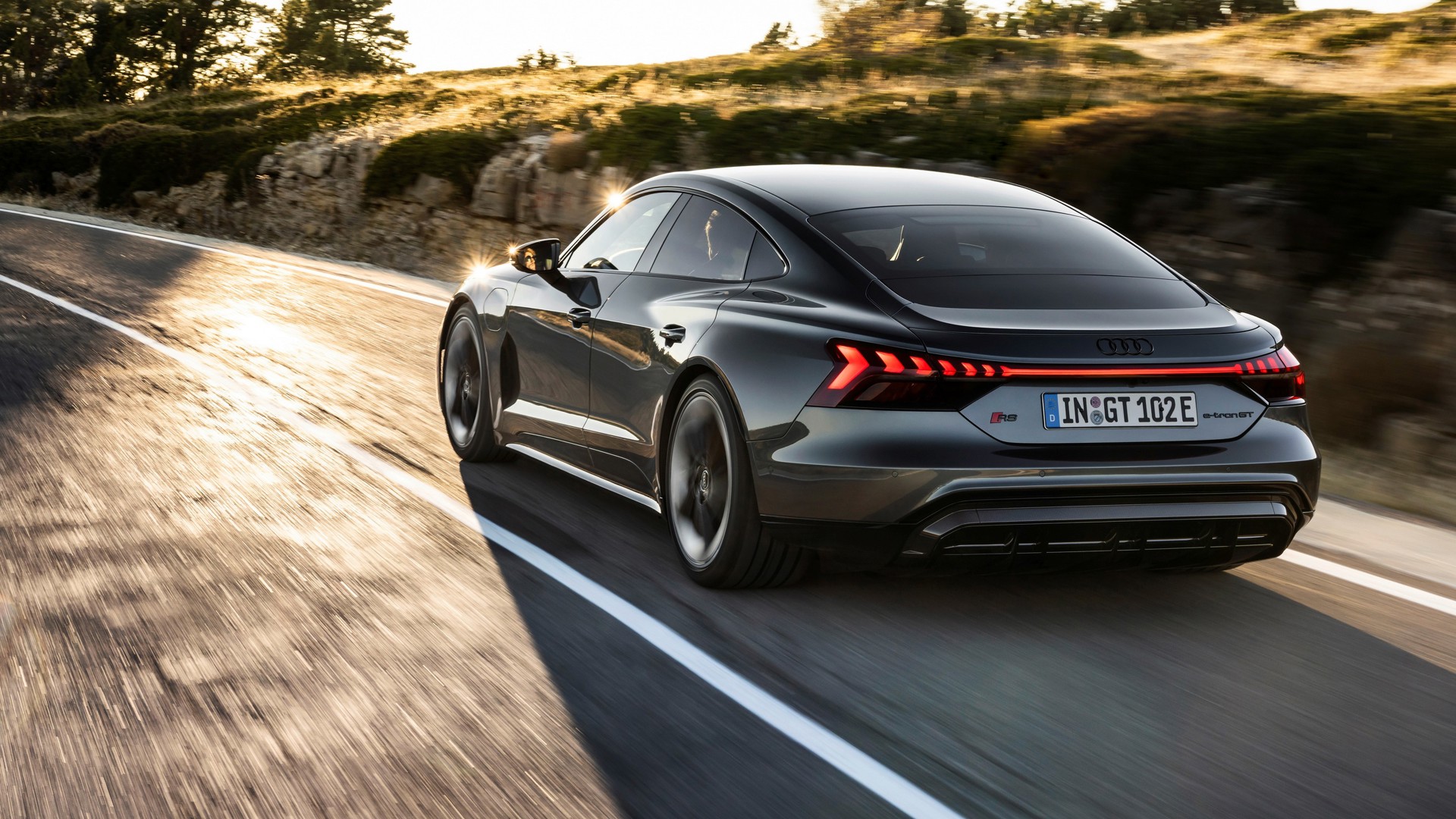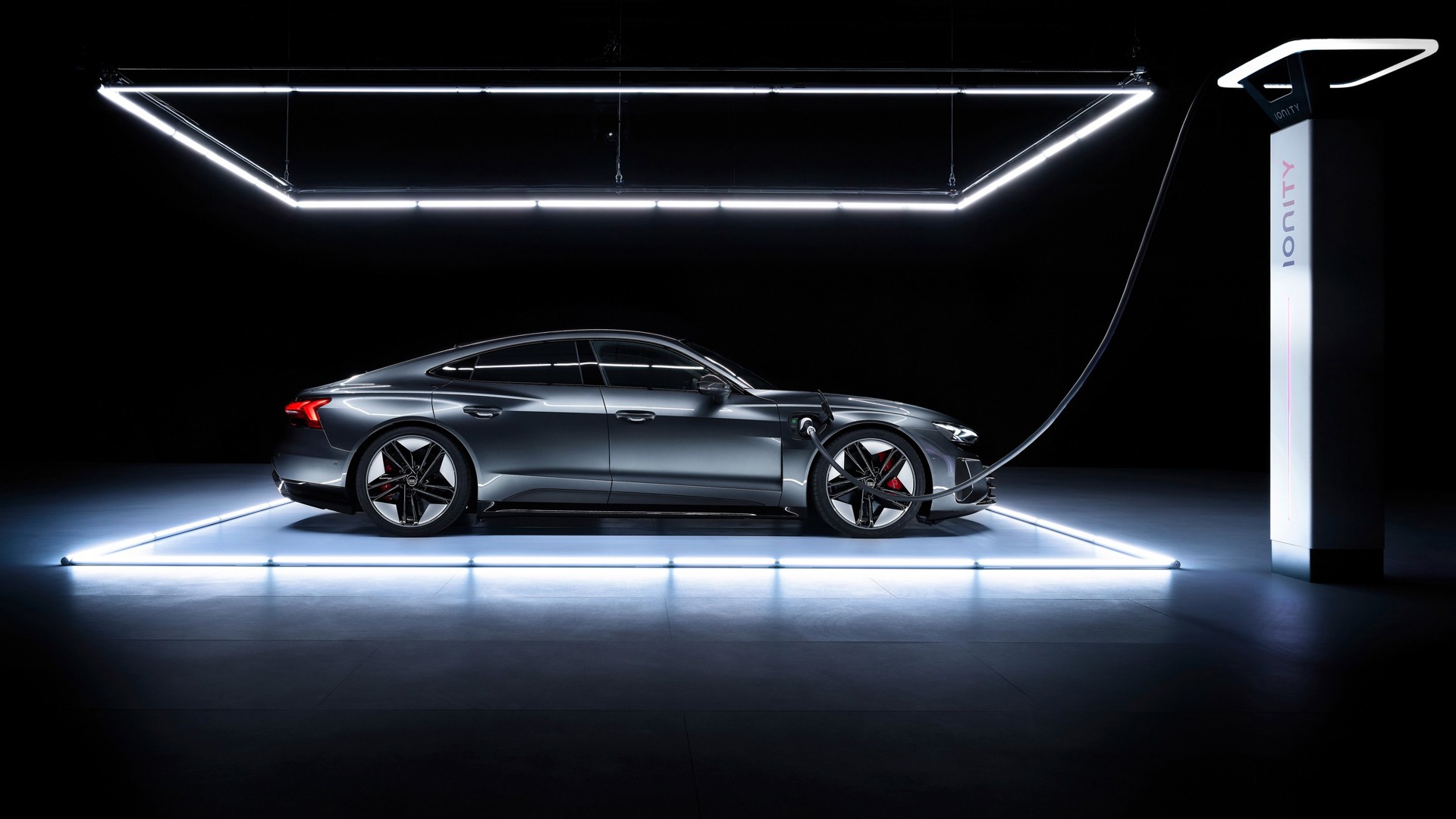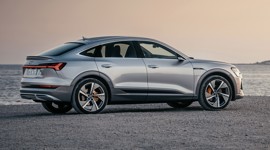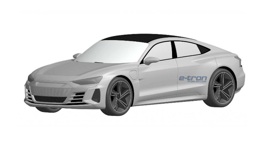Audi’s latest electric model and the company’s first electric flagship is here. The E-Tron GT is a car the automaker calls the gran turismo of the future, setting a new bar for the brand’s design and offering loads of technology to complement the space and luxury inside, with nearly 500 km of estimated range. The E-Tron GT RS is the Audi Sport model, adding even higher levels of performance and becoming the most powerful road-going car the brand has ever produced.
It’s been two years since the E-Tron GT concept made its debut at the Los Angeles auto show, but the production version you see today looks almost identical to the car that sat on that revolving stage. The sleek roofline still jumps out, while the four wide fenders, which Audi calls “quattro muscles,” give the car a stance like nothing else in the segment.
A Spacious and Sustainable Cabin
Don’t let the low roof fool you, though, Audi says that the “foot garage,” made possible by a cut-out in the battery pack under the floor, let them lower the rear seats to offer usable passenger space back there.
Space is important for this car, because Audi says the difference between a performance car and a grand tourer isn’t how fast it can go, but rather how much room there is inside. A GT needs to feel airy for long journeys, and the low front seats, wide centre console, and driver-oriented infotainment screen are all designed to give you that feeling of space. 405 L of trunk and 85 L of frunk space help you bring along your grand touring gear.
The cockpit gets a 10.1-inch MMI touch display, while the driver sees a 12.3-inch Audi virtual cockpit plus digital dash. In addition to text input on the MMI screen, the system offers natural voice control. Six users can store their own settings in the car’s memory. Audi is offering multiple leather-free interior options, including a seat fabric made from 119 empty plastic bottles (per pair of seats) that it says feels like wool with a more technical look. Recycled materials are used throughout, including in the carpet and headliner, though traditional leather will be offered. RS models get more heavily bolstered sport seats as well as other sport trimmings.
Driver assist features include pre sense front and pre sense basic, the former offering emergency braking and the latter preparing seatbelts, windows, and other vehicle components for an imminent crash. It also has available night-vision assist and surround-view cameras, with available adaptive cruise and standard efficiency assist.
A Grand Tourer With Launch Control
Performance is still a big part of the equation of the grand tourer. The E-Tron GT offers 470 hp and 465 lb-ft of torque, but launch control mode can boost that power figure to 523 hp for 2.5 seconds at a time. That will let it hit 100 km/h in 4.1 seconds and 200 km/h in 15.5. The E-Tron GT RS uses the same front motor but a more powerful unit in the rear that translates to a combined output of 590 hp most of the time or 637 on boost mode. Max torque there is 612 lb-ft, and it does the same acceleration runs in 3.3 and 11.8 seconds respectively. Like the Porsche Taycan, with which the E-Tron GT shares a platform and some major electric components, the E-Tron GT’s rear motor has a two-speed gearbox that can improve performance and efficiency.
Braking up to 0.3g, which Audi says is “the vast majority of all brake applications in everyday driving” is handled entirely by the regenerative system in most situations. When more braking is needed, steel discs come standard on the E-Tron GT, while a new carbide rotor that is stronger, puts off less dust, and (important for EVs) doesn’t flash rust is optional. On the E-Tron GT RS, the carbide rotors are standard with full carbon-ceramics available.
Standard steel suspension (with electronically controlled damping) comes with the GT, but both the GT and GT RS offer adaptive three-chamber air suspension that can go up 22 mm for clearance or down 20 mm for aero efficiency. Each of the three chambers can be activated individually for comfort and handling trade-offs as needed or as requested in the various drive modes.
Battery
Standard charging of the 85-kWh battery is through 11-kW AC charging, though a 22-kW onboard charger will be optional. On DC, up to 270-kW charging is offered, enough to add 100 km in five minutes, or to go from five to 80 per cent in 23 minutes. Audi has put two charge doors, one in each front fender, on the car to make home charging easier, with the driver’s side able to handle AC charging and the passenger-side ports able to handle both AC and DC.
Range is estimated at 488 km for E-Tron GT and 472 km for E-Tron GT RS on the WLTP cycle, which tends to be generous compared to EPA figures. One Audi engineer raised the real-world example of driving from Munich to Berlin, saying the 600 km Autobahn drive would require two or three charges. At face value, that seems to contradict the near-500 km range advertised. Then he mentioned that even with the stops, the drive took just six hours – drive that quickly and your gas car will need two or three stops as well. It shows that the E-Tron GT can cover long distances at very high speeds just fine.
Both the E-Tron GT and E-Tron GT RS are set to go on sale this spring, with production at Audi’s net-zero-carbon-footprint Böllinger Höfe plant. Expect pricing and options closer to the GT’s arrival at dealers.
